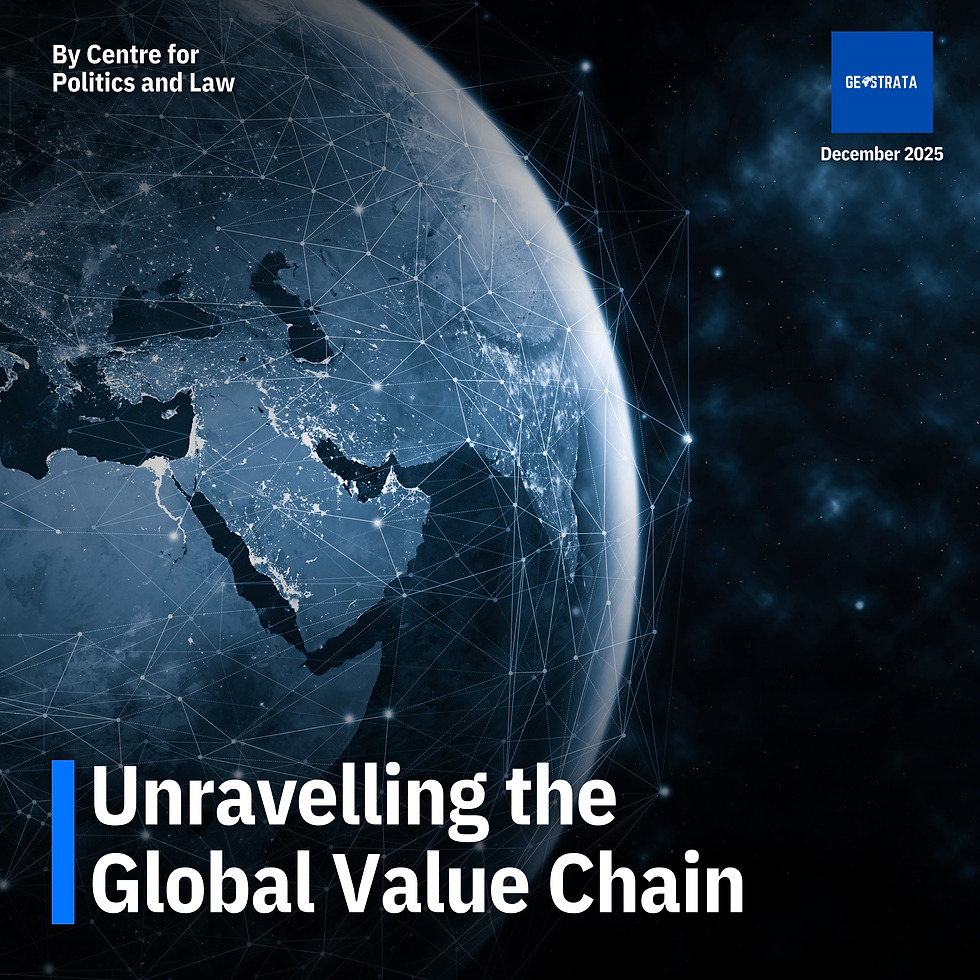World Upside Down - A Tale of Shifting Power Dynamics
- THE GEOSTRATA

- Feb 3, 2024
- 4 min read
Updated: Feb 5, 2024
“We are today in a world that is neither a bipolar nor a multipolar world as yet. It is a fractured world”
This book provides an insightful view of how the power dynamics in the contemporary world are shifting. It has a comprehensive approach to its subject matter that sets it apart.

Illustration by The Geostrata
The book is divided into four segments: a) Reordering the strategic landscape, which deals with how the world has evolved due to certain events like WWII, the end of cold war, and the rise of China with the recent covid-19 pandemic; b) Quadrilateral Sphere, which describes the increased role of India, Japan and Australia in maintaining the rule of law in the Indo-pacific region and how India can use choke points like the Strait of Malacca to have an advantage over China, c) Chinese Checkers, which generally describes the growing rift between India and China; d) Navigating India’s Neighbourhood, which describes why maintaining good ties with neighbours is necessary for India to counter China and Pakistan
The author started by making a claim that the existing world order is impacted by four major issues; the end of the cold war and the rise of China after the brief interlude of the unipolar decade of 1990s in the US was the superpower, the deepening rift between the erstwhile strategic partners, the US and China, Covid-19 Pandemic and the resultant geostrategic differences in a digital age, and Ukraine conflict.
This gives insights about how “the world is shifting towards multipolarity but at the same time diverging from multilateralism”.
There is a rise of bilateralism and regional agreements and also unilateralism that can be seen in the aggressive rise of China. Also it explains how India can leverage on contemporary issues like the pandemic and Ukraine crisis to become an anchor in the Indo-Pacific.
Talking about China, the author commented that it just want to “reshape the existing order to suit its own objectives” and also to “create and lead the parallel institutions” like Asia Infrastructure Investment Bank (AIIB) and New Development Bank (NDB) as these provide China the means to compete with the influence of Western powers. Simultaneously, there is increasing focus on groupings like QUAD to counter China’s influence.
India should focus more on its neighbouring countries as during the recent times “all countries except Bhutan are reclining more towards China”. But still there is a consensus among the countries about the problems posed by another rival of India, i.e. Pakistan.
The author captures this as “Cooperative Security in any region is like a chain that is as strong as its weakest link. South Asia too has a weak link, with one country choosing to adopt terrorism as an instrument of state policy against its neighbours.”
The book deserves praise for how the author linked several broad issues together. For example, while talking about the Ukraine conflict, the author seamlessly compared it to Taiwan and explained how parallels can be drawn between the two, “the US policy of ‘strategic ambiguity’ may not suffice to reassure Taiwan in the aftermath of events in Ukraine.”
Another example is of the existing institutions(IMF, World Bank) that established the linkages between access to finance and democracy & human rights and how Global South view this as an interference in their internal matters. China took this opportunity to create alternative institutions without making economic assistance conditional to intrusive demands for good governance.
The other concept that deserves praise is not only making certain claims but also providing evidence for them. “India is bound to emerge as one of the foremost powers in the world by the mid0dle of this century”- for this claim the author describes how the policies of India like strategic autonomy, Neighbourhood First Policy and Vaccine Maitri programme and principle of vasudhaiva kutumbakam (the world is one family) help India to emerge as a credible power. With these and other developments “the world seems prepared to take a long term bet on India’s economic rise”
This is a great read not only for academicians and scholars but also for any ordinary person who has a keen interest in world issues and wants to know India’s stand on them. The language used throughout the book is very fluid and simple.
The author explained very deep concepts and foreign policies of India in very layman language that anybody can comprehend. Also, as the author has held important diplomatic assignments including in China, Australia and Japan and being an expert in the security domain, the credibility of the book just increases and we can have unique perspectives and such deep insights about certain issues that otherwise would have been missed.
The context in which the book is written is apt with time. It perfectly touches on the topics of shifting power dynamics, supply chains, debts, financing, the rise of regional agreements, 5G, and similar ones that concern the entire world, as well as the stance of India on these contemporary issues. By going through the pages of these well laid out ideas, one gets to know how policymakers are dealing with the issues in contemporary times and how India is trying to leverage the issues to lead the developing countries towards an equitable and just world order.
BY ADITYA GULATI
TEAM GEOSTRATA
.png)







Insightful views